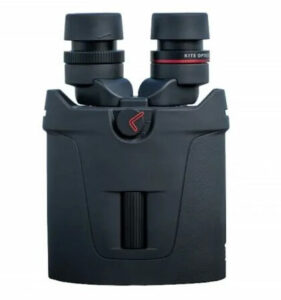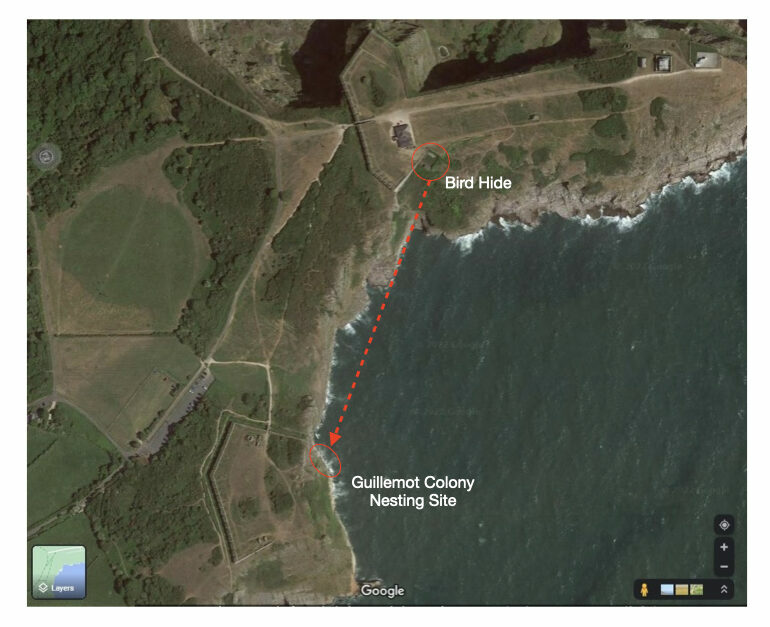 Kite Optics has always been a provider of high-quality optics, and we were thrilled to be given the opportunity to test a pair of stabilised binoculars from their range. The Kite APC Binoculars are purported to be ideal for watching birds and other wildlife. The big draw is the construction and ability to stabilise the image for more accurate observation.
Kite Optics has always been a provider of high-quality optics, and we were thrilled to be given the opportunity to test a pair of stabilised binoculars from their range. The Kite APC Binoculars are purported to be ideal for watching birds and other wildlife. The big draw is the construction and ability to stabilise the image for more accurate observation.
Unpacking
Opening the box, you find a neck strap, carry case, instruction manual and the binoculars themselves. The first impression of the binoculars is that they look and feel ready for anything. The binoculars’ rubber casing provides an incredibly easy grip while giving you the feeling that they could withstand a little rugged handling.
To start with
Before using the binoculars for the first time you need to take the necessary first steps, as you would with any pair of binoculars. Adjust the dioptre ring to take care of any sight needs, alter the width of the eyepieces if needed (which was simple as they are linked together mechanically to create a single round image when looking through the eyepieces) and insert some batteries.
This is essential to get the full impact of what these binoculars have been designed to give you. It should be noted that the manufacturer clearly states that you should not use rechargeable batteries in this product. As with all electronics that may be put away for periods of time, you should also not leave the batteries in the binoculars while stored. Though you only need to use two batteries to run the stabilisation, there is a compartment for another two batteries, effectively giving you double the length of use while out in the field by swapping over tired batteries with the spares.
To access the battery compartments, you need to look at the front end of the binoculars. On either side of the lens, you will see recessed openings with plastic lids that have flip-out handles. It was a little fiddly at first to get hold of these, but once raised, opening the compartments was easy. When replacing the lids on the compartments you cannot over-tighten them. When screwing them shut, you will reach a positive stop.
How we tested them
Originally the plan was to take the binoculars out on a boat to view birds, seals and dolphins. However, in the timeframe, it wasn’t possible as the weather stopped the trips going out. An alternative was to take the binoculars up to a local reserve in Devon, Berry Head. An ideal location for watching the sea traffic, scanning the water for cetaceans and viewing the local guillemot colony that is nesting on the cliffs, along with other pelagic species.

The objective here was to see how well they handled the windy conditions and the distance to the subject both on the water, in the air and on the cliffs.
What we found.
With a relatively clear and bright day to start with and a medium wind, it was easy to break the test down into three areas based on subjects. Walking to the edge of the headland, I started scanning the sea. Plenty of gannets were around in a couple of sea locations and, while watching them, they started to dive. Initially, I left the stabilisation off just to get a good understanding of how they felt based on having to compensate for any shake with my hands. It quickly became clear that was quite tiring on the wrists and fingers while keeping the image as steady as possible. These binoculars can be quite heavy, though you should take into account that they contain stabilisation technology. Turning on the stabilisation, using the horizontal dial, and raising them to view, I was amazed at the change in the viewing experience. If you have ever used a more recent phone to shoot video, you will understand the concept of the gimbal mechanism that is deployed in the binoculars. The image became a lot smoother, even with irregular gusts of wind. Being able to track the birds not only in flight but as they dived made the experience much more informative. While watching the gannets, the extra magnification enabled me to view them angling their heads to the side to look down on the sea while searching for fish.
A fortunate moment occurred while the birds were diving. Something I had hoped to test on a boat occurred with the appearance of a cetacean. There are five different cetacean species off our coast in Brixham. The one that is most difficult to spot because of their surfacing behaviour is the harbour porpoise. Typically, you get a fleeting glance as they surface and then they are gone, reappearing after some minutes in a different location. Harbour porpoises are more solitary in their behaviour which can also add to the challenge. But with the sharpness, contrast and stability of the binoculars I could scan around the area the birds were feeding and note any surface disturbance, sometimes pre-empting the moment the porpoise surfaced. This coupled with the clarity of the optics gave me the chance to identify the species, recognising the small angular dorsal fin before it submerged again. It should be noted that there was a slight chromatic aberration around the edges of the image, but this was outweighed by the image quality where it counts.
The final test was to visit the opposite side of the reserve and use the vantage point across the cove from the nesting colony. This is some distance away on the cliffs, so again I decided to turn off the stabilisation and try to look at the guillemots before switching it on. To provide a comparison I shot a couple of videos through the eyepiece to show the stability of the binoculars before and after activating the stabilisation. It’s apparent that, if you were trying to assess colony size, you could quite easily carry out a census using these binoculars.
Opinion
These binoculars are built to withstand a good level of environmental bashing! With a waterproof construction (IPX7) and the rugged covering, I wasn’t afraid to use them out in the elements. The clarity of the view through the binoculars provided a level of confidence in judging the scene and the species within. Contrast and colour were well represented, which is incredibly important when bird watching as this will be the difference between identifying one species over another. The stabilisation was a real game changer, especially for identification purposes. I would feel good about using these on a boat to be able to survey cetaceans as when you halt the boat, the rocking on the sea would make this an ideal advantage for scanning the water. Good thought has been put into the design of the controls, with a large horizontal focusing wheel easily accessible and controlled using the tips of fingers. The stabilisation switch has been designed not to intrude on the use of the binoculars. Turning the stabilisation on lets you forget about the need to activate them. When you aren’t using the binoculars and they are in a vertical position, around your neck, for example, the stabilisation goes into sleep mode, improving the battery life. I would mention that they are quite heavy, without the stabilisation you could get fatigued trying to compensate to keep the image static, but with the stabilisation active, I know the stress on the hands would be less.
The Kite APC Binoculars can be found here. Our full range of Kite Optics binoculars can be found here.
If you have any questions about our range or would like some advice on the right product for you then please contact us via email at customer.services@nhbs.com or phone on 01803 865913.






